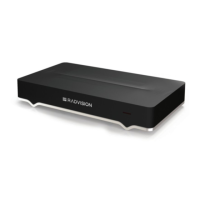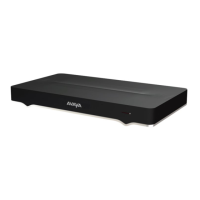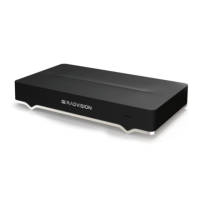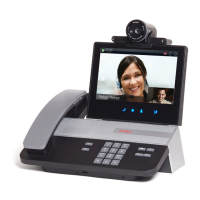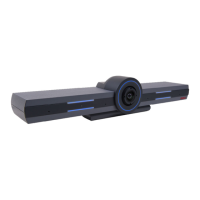Field Description
System Name Unicode (Web only) Enter non-alphanumeric characters, such as Chinese or Japanese
letters. If you selected this option from the System Name Display Mode list, the title
bar displays this name.
Hostname This field displays the name used to register the system to the network. You may
need the system's hostname, for example, if you are locating the device from a list of
hostnames on an SNMP agent discovery tool.
Typically, the Hostname is the same as the System Name, unless the System
Name includes characters not supported by the hostname standard. Invalid
characters are replaced by the - character.
3. From the web interface only, select Save.
Related Links
Advanced Configuration of the XT Series on page 112
Configuring Advanced Network Settings
You can configure many advanced parameters of your network connection.
Related Links
Advanced Configuration of the XT Series on page 112
Configuring Advanced IP Address Settings on page 116
Configuring Advanced Network Connectivity on page 118
Configuring NAT and Firewall Traversal on page 121
Defining QoS Priority of Types of Network Traffic on page 122
Configuring Advanced Gatekeeper Settings on page 124
Configuring Advanced IP Address Settings
About this task
This section describes how to configure the advanced IP address settings of each network port.
The system supports working with dynamic addresses (DHCP) or fixed addresses, either in IPv4
only, or it can work in both IPv4 and IPv6, where even media streams in the same videoconference
can be a mixture of IPv4 and IPv6. However, you can only use IPv4 for when sending commands
via HTTP, SNMP, or AT commands.
In some XT Series models, activating the second network port GLAN2
(dual-NIC) requires an
additional license (see Activating the XT Series and its Optional Features on page 78). Both small
businesses and large enterprises may require both network ports (see
Connecting Avaya Scopia
®
XT Series to the Network on page 46).
Advanced Configuration of the XT Series
116 Avaya Scopia
®
XT Series Deployment Guide April 2015
Comments? infodev@avaya.com

